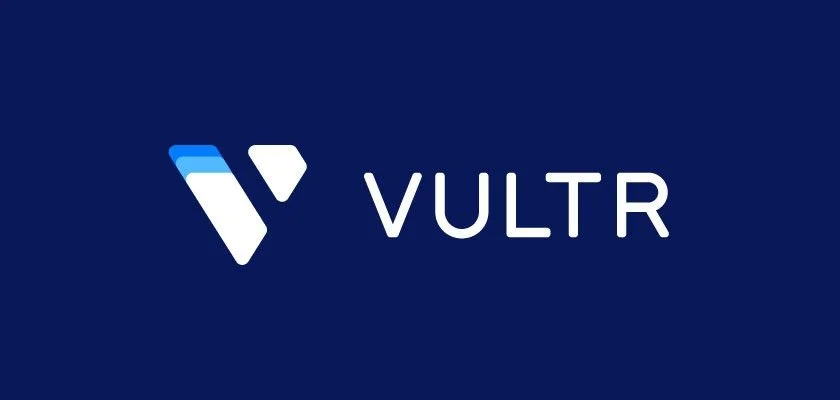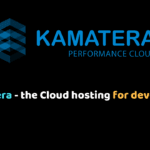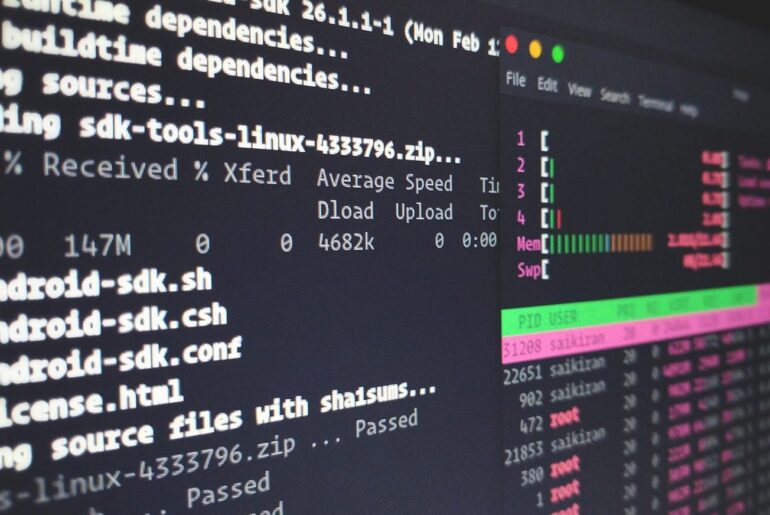Small product teams tend to want the same three things from their cloud: predictable bills, a control panel that doesn’t fight them, and enough headroom to grow without a lift-and-shift. This guide compares DigitalOcean and Vultr on those terms with current pricing and a few realistic deployment scenarios you can copy. You’ll create Droplets/instances, load balancers, and a managed database, then see how backups, snapshots, and object storage change the bill, so you can choose with clear trade-offs in mind.
You’ll need a DigitalOcean account to follow along for the DO examples; Vultr steps mirror them closely. We’ll start with headline differences, then get hands-on with IaC and CLI so you can reproduce results quickly.
TL;DR for small teams
DigitalOcean tends to be simpler to price at the low end and has a very friendly Kubernetes story with a free control plane; Vultr often wins on per-feature sticker price for load balancers and offers very flexible instance families, but recent object-storage tiers start higher than DO’s entry plan. Both charge the same bandwidth overage, and both make backups and snapshots easy to toggle from the UI or API.
If your priority is a predictable “starter bundle,” DO’s $5 Spaces and $12 load balancer make it easy to model; if you’re optimising every line item, Vultr’s $10 load balancer and wide VM matrix are attractive. The rest of this guide shows how those differences add up at $100–$400/month team scales.
Pricing that actually hits your invoice
Compute. Comparable general-purpose plans start around $20–$24/month for 2 vCPU/4 GB RAM. DigitalOcean’s Basic Droplet at this size is $24/month and includes pooled outbound transfer; Vultr’s “Regular 4 GB (2 cores)” commonly lists at $20–$24/month depending on family and region. In practice, either option is viable for small app+API nodes, so you’ll decide based on bandwidth and add-ons.
Bandwidth and overage. Both providers include outbound transfer with each VM and bill overage at $0.01/GB (inbound is free). DigitalOcean pools transfer across Droplets at the team level; Vultr bills when you exceed the quota attached to your instances. For small teams with spiky traffic, pooling can shave surprises, while identical overage rates keep math simple.
Load balancers. DigitalOcean regional HTTP LBs start at $12/month per node; Vultr LBs start at $10/month. If you expect lots of tiny projects, that $2 delta adds up; if you value baked-in HTTP features and one-click scaling of nodes, DO’s per-node model is straightforward.
Managed databases (PostgreSQL). Entry plans start at about $15/month on both platforms, with high-availability doubling effective cost. Storage add-ons and read replicas are available, so you can grow without changing vendors. Budget for HA early if you have uptime SLAs.
Backups and snapshots. DigitalOcean’s automated VM backups are 20% of Droplet cost for weekly or 30% for daily; snapshots are $0.06/GB-mo. Vultr’s automatic backups add 20% to the instance price; snapshots are $0.05/GB-mo. Snapshots are great for golden images; backups are for quick restore points—most teams end up using both.
Object storage. DigitalOcean Spaces starts at $5/month and includes 250 GB storage + 1 TB transfer, with $0.02/GB-mo extra storage and $0.01/GB extra transfer. Vultr’s current object-storage tiers include 1 TB storage + 1 TB transfer starting at $18/month (Standard), with higher tiers scaling price and storage per GB thereafter; overage egress is $0.01/GB. Choose based on base footprint: DO is cheaper if you store <250 GB; Vultr is cost-effective if you start near 1 TB.
Kubernetes. Both offer a free control plane; on DigitalOcean you can add HA to the control plane for $40/month. Nodes are just regular VMs on both platforms, so your cost scales with worker size. This keeps cluster overhead low for prototypes and small services.
Support. DigitalOcean publishes clear support tiers: $0, $24, $99, $999 per month with defined response times, which helps when you need predictable escalation without enterprise contracts. Vultr support is included with products; pricing for premium tiers isn’t published in the same way, so plan for standard ticketing unless you’ve negotiated otherwise.
At-a-glance deltas (summary). Compute pricing is roughly even in the common small-VM sizes; LB and snapshot line items skew slightly cheaper on Vultr; entry object storage is cheaper on DigitalOcean unless you need ~1 TB+ from day one. Bandwidth overage is identical. This means total cost is determined more by how many ancillary services you need than by core VM price.
Usability: day-to-day DX for small teams
Control panels and workflow fit. DigitalOcean’s UI prioritises a linear “create → tag → monitor” flow with pooled bandwidth and sane defaults; Vultr’s panel surfaces more instance families and knobs in one place, which can feel powerful or noisy depending on your team. Both provide clean activity logs, firewall management, and team access controls. If your team rotates responsibilities, DO’s opinionated defaults often reduce misconfigurations.
Networking primitives. Reserved/static IPs are first-class on both; DigitalOcean charges $5/month only when an IPv4 is reserved but not attached, while IPv6 reservations are free; Vultr exposes reserved IPs as part of its advanced networking suite. Both include free cloud firewalls and DNS.
Kubernetes ergonomics. “Free control plane” keeps cluster experiments inexpensive on both providers; adding HA on DO is a single toggle with a clear $40/month price tag, and upgrades with surge are included. If you are new to K8s, DO’s docs and marketplace add-ons feel more scaffolded; if you want to choose exact worker families, Vultr’s breadth is handy.
Managed DB options. Both offer Postgres, MySQL, and Redis-style services with point-in-time recovery and read replicas; DO’s price table and monthly caps are unusually explicit, which helps non-infra teammates model costs. Vultr’s “starting at” pricing aligns to underlying compute families, which is flexible but requires a few more clicks to forecast precisely.
Scenario 1: tiny production + staging (API + DB + static assets)
Assumptions. 2× app VMs (2 vCPU/4 GB), 1× managed Postgres starter, 1× regional load balancer, weekly backups on app VMs, 200 GB of static assets, 700 GB/month egress from object storage (CDN optional).
DigitalOcean (approx/month).
- 2× Droplets @ $24 = $48.
- Managed Postgres starter = $15 (single-node; plan HA from ~$30+).
- Load Balancer = $12.
- Weekly backups = 20% of two Droplets ≈ $9.60.
- Spaces: $5 base (250 GB + 1 TB egress covers this scenario).
- Est. total ≈ $89.60 before taxes. If you add daily backups (+30%) or HA DB, adjust accordingly.
Vultr (approx/month).
- 2× Regular 4 GB (2 cores) ~ $40–$48 (use $20–$24 each depending on family/region).
- Managed Postgres starter ≈ $15+.
- Load Balancer = $10.
- Automatic backups = +20% on two instances ≈ $8–$9.60.
- Object Storage Standard tier = $18 (1 TB storage + 1 TB egress included; overkill on storage but within allowance).
- Est. total ≈ $91–$100.60. If you pick a $24 family or add HA DB, totals converge further.
Takeaway. For sub-250 GB assets, DigitalOcean usually lands cheaper because of the $5 Spaces plan; if you already sit near 1 TB storage+egress, Vultr’s $18 tier becomes competitive. The rest of the stack prices out nearly the same at this scale.
Scenario 2: add traffic and resilience (same stack, +HA DB, +more egress)
Assumptions. Same as Scenario 1, but switch DB to HA and add ~2.5 TB/month total egress across compute+storage.
Cost drivers to watch on both:
- HA DB roughly doubles base DB cost; budget $30+/mo minimum.
- Bandwidth overage after pooled allowances bills at $0.01/GB on both.
- Load balancer nodes (DO) can scale linearly if you need more connections.
Implication. Once egress dominates, the platform choice matters less than your caching/CDN strategy; at $0.01/GB both vendors converge, so invest effort in cache-hit ratios and compression rather than chasing a different VM sticker price.
Hands-on: reproduce the setup quickly
Below are minimal, working snippets that create a VM, firewall, and a load balancer on each platform. They are intentionally small so you can paste, test, and iterate without extra dependencies.
DigitalOcean with Terraform
# versions.tf
terraform {
required_providers {
digitalocean = {
source = "digitalocean/digitalocean"
version = "~> 2.38"
}
}
}
provider "digitalocean" {
token = var.do_token
}
# main.tf
resource "digitalocean_droplet" "app" {
name = "app-1"
region = "fra1"
size = "s-2vcpu-4gb"
image = "ubuntu-22-04-x64"
tags = ["app"]
}
resource "digitalocean_firewall" "app" {
name = "app-fw"
droplet_ids = [digitalocean_droplet.app.id]
inbound_rule {
protocol = "tcp"
port_range = "22,80,443"
source_addresses = ["0.0.0.0/0", "::/0"]
}
outbound_rule { protocol = "tcp"; port_range = "1-65535"; destination_addresses = ["0.0.0.0/0", "::/0"] }
}
resource "digitalocean_loadbalancer" "web" {
name = "web-lb"
region = "fra1"
forwarding_rule { entry_protocol = "http"; entry_port = 80; target_protocol = "http"; target_port = 80 }
healthcheck { protocol = "http"; port = 80; path = "/" }
droplet_ids = [digitalocean_droplet.app.id]
}Create a starter Postgres cluster in the UI at ~$15/month single-node, or add the digitalocean_database_cluster resource when ready. The control plane for Kubernetes is free if you later switch to DOKS.
Vultr with Terraform
# versions.tf
terraform {
required_providers {
vultr = {
source = "vultr/vultr"
version = "~> 2.18"
}
}
}
provider "vultr" {
api_key = var.vultr_api_key
}
# main.tf
data "vultr_region" "fra" { filter { name = "city"; values = ["Frankfurt"] } }
resource "vultr_server" "app" {
plan_id = "vc2-2c-4gb" # Regular 2 vCPU / 4 GB
region_id = data.vultr_region.fra.id
os_id = 543 # Ubuntu 22.04 x64
label = "app-1"
enable_ipv6 = true
}
resource "vultr_firewall_group" "app" { description = "app-fw" }
resource "vultr_firewall_rule" "ssh" {
firewall_group_id = vultr_firewall_group.app.id
protocol = "tcp"
network = "0.0.0.0/0"
subnet_size = 0
port = "22"
}
# Attach a Load Balancer ($10/mo) targeting the instance
resource "vultr_load_balancer" "web" {
region_id = data.vultr_region.fra.id
label = "web-lb"
forwarding_rules {
frontend_protocol = "http"
frontend_port = 80
backend_protocol = "http"
backend_port = 80
}
instances = [vultr_server.app.id]
}Add a managed Postgres in the panel (starts at ~$15/month) and enable automatic backups (+20%) on the VM for quick restores. You can later migrate to VKE with a free control plane and reuse the same instance families for nodes.
Cost controls that actually work
- Right-size storage early. Spaces at $5 (DO) is hard to beat for small assets; Vultr’s $18 Standard tier makes sense only when you’re legitimately near 1 TB storage/egress. Keep an eye on growth curves; switching tiers later is easier than migrating buckets under pressure.
- Prefer backups for recovery, snapshots for images. Backups are a percentage of instance price; snapshots are per-GB. Combine weekly backups (cheap insurance) with occasional snapshots for reproducible deployments. This mix typically minimises spend while improving rollback speed.
- Watch egress before you add nodes. Since overage is $0.01/GB on both, a small caching win often beats scaling compute. Pooled transfer on DO can cushion spikes; on Vultr, track per-instance quotas to avoid paying for unused headroom elsewhere.
- Use the cheapest LB that meets your needs. If you’re purely L4 or simple HTTP, Vultr’s $10/mo LB is the lowest sticker; if you need to step up capacity via additional nodes with clear limits, DO’s model is easy to reason about without benchmarks.
What it feels like to operate on each
Teams new to cloud infra usually get productive faster on DigitalOcean because pricing pages, support tiers, and the “one way to do it” vibe reduce cognitive load. App migrations later are not painful because primitives (VMs, VPC, LB, block/object storage) look very similar to anywhere else. By contrast, Vultr appeals if you enjoy picking exact VM families and shaving a few dollars per service, especially where $10/month load balancers and cheaper snapshots help at the margins. The important bridge is that both now offer free K8s control planes, similar managed databases, and identical bandwidth overage, so you won’t paint yourself into a corner either way.
Quick reference: entry costs and gotchas
- Compute: DO 2 vCPU/4 GB = ~$24; Vultr Regular 2 vCPU/4 GB = ~$20–$24. Check region and family before comparing one-to-one.
- Managed Postgres: both start ~$15/month single-node; HA roughly doubles.
- Load balancer: $12 (DO) vs $10 (Vultr).
- Backups: 20% weekly / 30% daily (DO) vs 20% (Vultr).
- Snapshots: $0.06/GB-mo (DO) vs $0.05/GB-mo (Vultr).
- Object storage base: $5 (250 GB + 1 TB) DO vs $18 (1 TB + 1 TB) Vultr.
- Egress overage: $0.01/GB on both.
- Kubernetes control plane: free on both; DO HA CP is $40/month.
Decision guide
If you want the fewest moving parts and the cheapest on-ramp to object storage and K8s, start with DigitalOcean and use the defaults shown above. If you value slightly cheaper load balancing and per-GB snapshot pricing, or you want to fine-tune instance families across many regions, Vultr makes a lot of sense. In both cases, keep your architecture portable—compose from VMs, managed DB, and object storage with Terraform—so you can renegotiate or re-balance later without a rewrite. Next step: pick Scenario 1, deploy it exactly as shown, and compare your real bills after two weeks of traffic.
Appendix: quick commands to sanity-check bandwidth and costs
DigitalOcean: pooled bandwidth view
# Requires doctl (brew install doctl) and an API token
doctl auth init
doctl account get
doctl billing-history list --format "Date,Type,Amount"
# Bandwidth notes & calculator: https://www.digitalocean.com/community/tools/bandwidthThe billing page confirms pooled transfer and line items; use the bandwidth calculator to project egress before launch day.
Vultr: quick usage and overage check
# Requires vultr-cli (brew install vultr-cli) and API token
vultr-cli account info
vultr-cli instances list
vultr-cli invoices list
# Watch for overage at $0.01/GB once quotas are exceededThe account and invoices endpoints make it obvious when you cross bandwidth or add chargeable features like snapshots or backups; plan alerts accordingly.
Prices shown are list prices in USD as of September 2025, exclusive of taxes, promo credits, or region surcharges. For apples-to-apples comparisons, we used common 2 vCPU/4 GB plans, entry managed Postgres, one regional LB, and published backup/snapshot rates. Where a range is given, the lower end reflects “regular” families and the upper end “high-performance”/NVMe families in typical EU regions.










